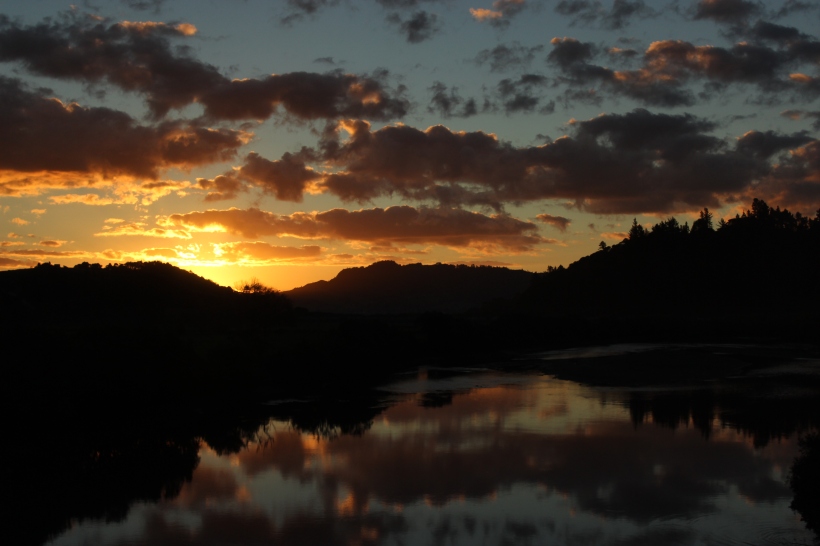Today I when on the day trip to Cape Reinga, the northwesternmost tip of the north island on New Zealand. It was another early start with the bus picking me up at 7:15am. After a quick loop of Paihia to collect our travellers for the day we were off as the sun started to rise.
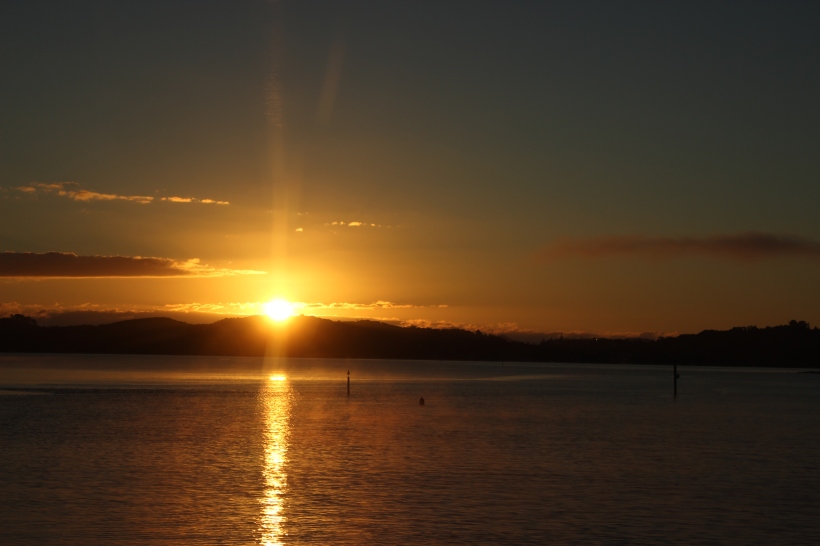
Our first destination of the day was the Puketi Kauri Forest. These trees are some of the most incredible trees you could hope to see, growing to over 50 meters tall and living for over 2000 years. Kauri forests once covered 1.2 million hectares of the north island before they were cut down, initially by the Maori people for boat building, carving and constructing houses. When the Europeans arrived, these trees were decimated due to the Europeans seeing them as ideal for ships masts and spars due to the fact the trees grew so straight. Today kauri trees are protected and about 2% of the initial population of the trees survive in New Zealand.
Kauri trees were also useful for the gum they produced. If a branch fell from one of the trees, a gum was produced naturally by the tree to protect the wound from disease until a new branch grew or the bark healed over. The gum would then fall to the forest floor and fossilise over millions of years to produce amber. Europeans would dig for the gum as it became an essential element in varnishes and other resin based products. A more drastic method of sourcing the gum would be to bleed the still living trees, which of course caused irreparable damage.
We stopped for about 10 minutes to have a walk around the kauri trees. These trees are still relatively young – about 400 years old. The kauri trees are easy to spot for the pale colour of their bark – as well as their size. These giants standing amid the New Zealand bush are quite spectacular.
In Waipoua Forest you can find the largest living kauri tree, Tane Mahuta – Lord of the Forest. According to Maori mythology, Raninui, the sky father, and Papatuanuku, the earth mother, were locked in a tight embrace and the world was darkest. Tane Mahuta, the strongest of their children, broke the two apart so that the sky and earth were separated. The tree is over 50 meters tall and has a girth of 13 meters.
We then headed up to Doubtless Bay for a quick stop. The sun was out by this point and while it was still a little chilly, it was turning into a beautiful day. I had a little stroll along the beach and saw a gathering of oystercatchers which didn’t seem overly fussed by us tourists. They soon scuttled away as I got too close though. The beach here isn’t as shelly as Paihia but there was still plenty strewn across the sand.
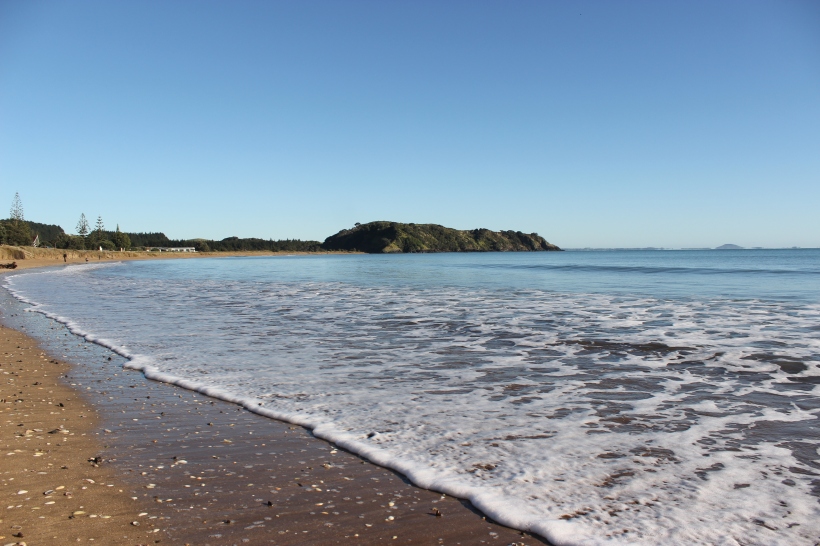
Then we were off to Houhora where we had an early lunch of fish and chips opposite Mount Camel. It was very picturesque, just us in the little bay – and the seagulls who were after our lunch. Captain Cook named Mount Camel in 1769, describing it as “a high mountain or hill standing upon a desert shore”. The fish and chips (or should that be fush and chups) were excellent – although I think the ones back home might be better – but only slightly. After lunch we hit the road again, this time it was a straight run up to Cape Reinga.
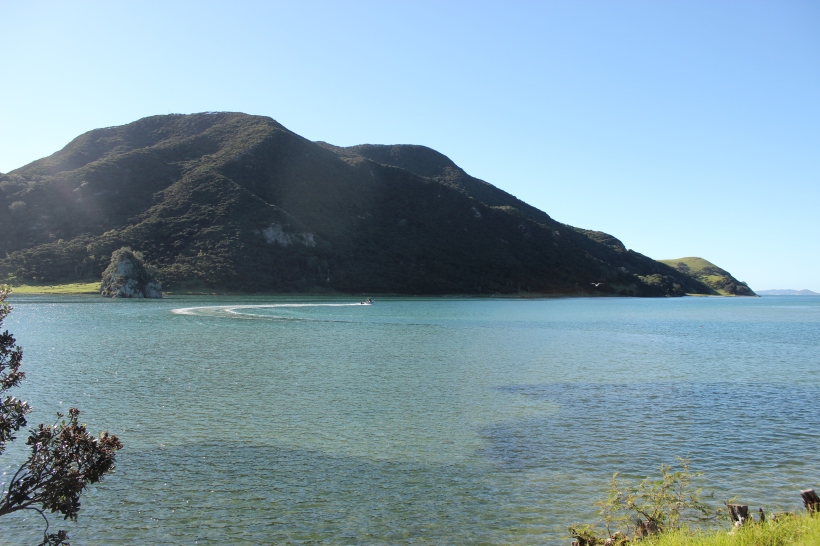
Cape Reinga is also considered to be the point at which the Tasman Sea and the Pacific Ocean meet. It is a significant place to the Maori as it is here where the spirits of the Maori people depart the mainland on their journey to the afterlife. They travel to Three Kings Islands (of which we had a good view thanks to the clear weather) before looking back to the land, signing one final song to the loved ones they leave behind, and then continuing to their homeland of Hawaiki.
In 1941 the lighthouse was built, replacing the one which sat at nearby Motuopao Island as it was difficult to access. The lantern fittings from the Motuopao lighthouse were used at Cape Reinga however an electric lamp was fitted at the new lighthouse which could be seen for 26 nautical miles. In 1987 the lighthouse was fully automated and it is now monitored remotely from Wellington. The lens and lantern were replaced in 2000, powered by batteries which are recharged by solar panels. The beacon at Cape Reinga flashes every 12 seconds and has been viewed as far as 50km away. It is a stunningly beautiful place, and you feel very small standing at the edge of a country.
Fun fact – Cape Reinga is not the most northern point in New Zealand – the Surville Cliffs at North Cape which are 30km east of Cape Reinga are actually the most northern point. North Cape, however, is a scientific reserve and is not actually open to the public.
After our time at Cape Reinga, we drove to Te Paki Stream where we saw giant sand dunes which we could sand board down. To begin with, I was totally up for sand boarding – it looked pretty darn fun. Of course, looking down at the sheer drop of the sand dune once you’re up there is something of a different story. I took my time to big myself up for it, then absolutely failed when it actually came to flinging myself down this sand dune. But hey, at least I did it and I have the bruises to prove it.
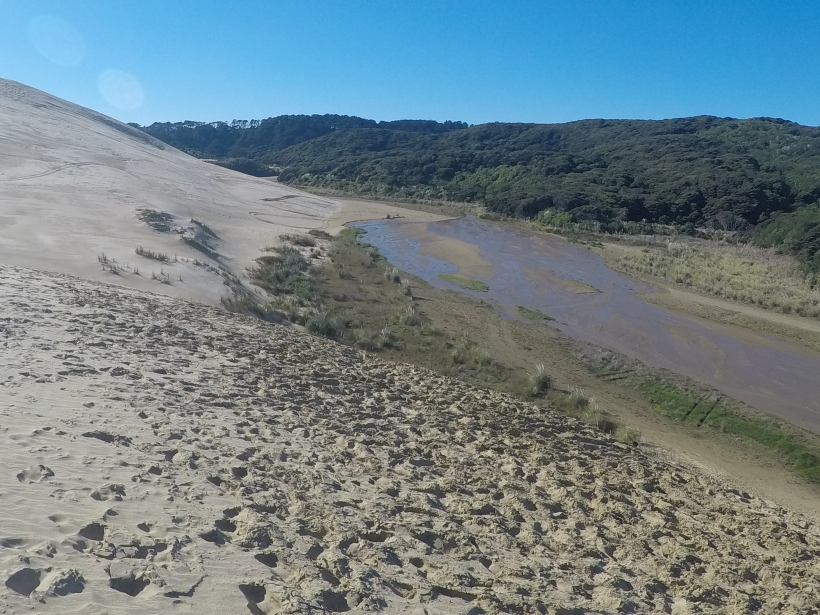
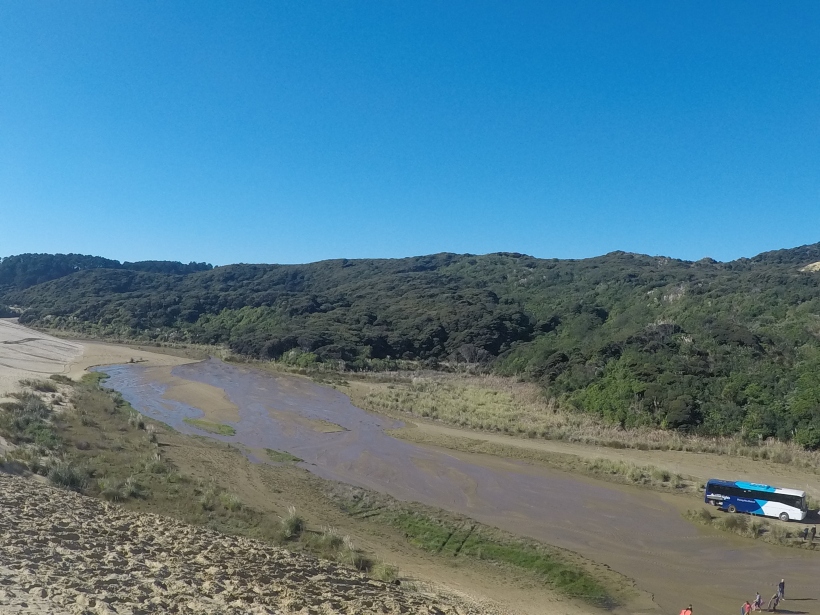
Our driver was amazing – she was very funny and informative telling us about the history of the different towns and places we passed through as well as explaining the Maori heritage and language. The highlight would have to be when she put us all to shame, gliding down the sand dunes like a true professional.
After sand boarding, we headed back down to 90 Mile Beach. The beach isn’t actually 90 miles long – this comes from Europeans who were travelling the beach. Back in the day, the standard distance a horse was thought to cover in a day was 30 miles. It took explorers 3 days to travel from one end of the beach to the over, and so they believed the beach was 90 miles long and hence the name. The beach is actually 55 miles long, but 90 Mile Beach sounds way cooler.
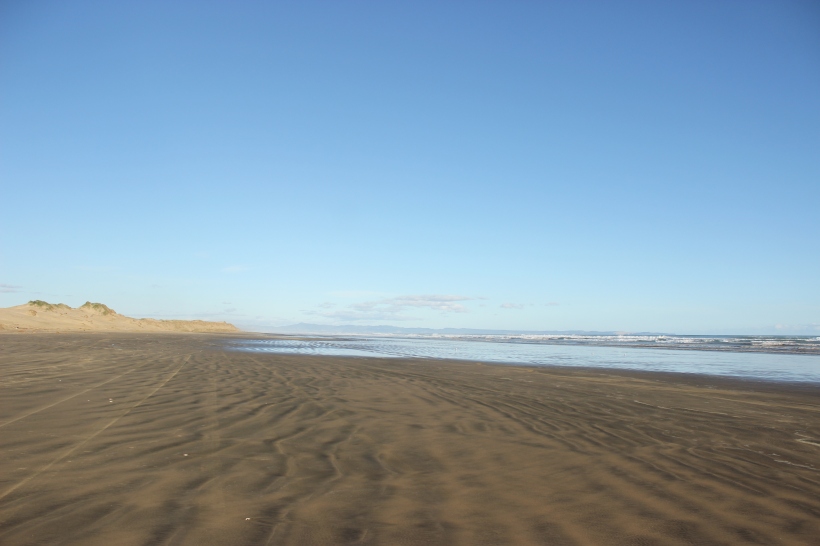
The beach is made cooler still by the fact it’s actually a highway and open for the public to drive on. Of course, you want to make sure you have the right vehicle for the job and stay on the right part of the beach. After a quick splash in the sea, during which I got soaked, we drove the bus along the beach.
Our final stop of the day was at Awanui where I bought the most amazing slice of banana cake to ever have existed and had a look around the souvenir shop which showcased furniture and sculptures made from kauri wood. After this pit stop we headed back to Paihia, the sun setting behind us as we went.
